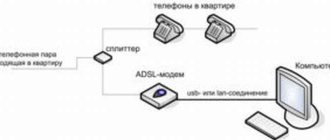January 17, 2021 admin Home page » Tariffs Views:
Free access is available to the new tariffs (“Freedom of Communication”-250, “Freedom of Communication-500”) offered to its customers by Rostelecom. They differ from other tariff plans in that at a fixed price of 250 (500) rubles, the subscriber receives a certain package without paid minutes. If the package volume is exceeded, tariffs are determined at a reduced price.
Both plans have almost the same characteristics. The only differences are that the subscriber is charged a different monthly fee and is provided with a larger or smaller volume without paid voice minutes, Internet traffic and SMS messages.
Prices
The “Freedom of Communication” group is offered in several versions, which differ, first of all, in price: there is an option for 150 rubles, for 250 rubles, for 290, and also for 500 rubles. This amount is a monthly fee; the amount determines the number of connected options and the limits of minutes, SMS, and Internet traffic.
Important! By choosing any package option. Your Internet will always work, even after the limit has been reached. Only the speed will be limited to a minimum of 64 kilobits.
150
The “Freedom of Communication” option, costing 150 rubles, includes unlimited calls within your provider’s network, 200 minutes for calls with subscribers of third-party Russian operators, the same amount of SMS, as well as 1 gigabyte of Internet traffic. This tariff is perfect for those who do not make many calls and do not need additional options.
250
The 250 ruble option also gets unlimited minutes for calls within your provider’s network, 300 minutes for calls to subscribers of third-party Russian operators, 200 SMS, as well as 2 gigabytes of Internet traffic. The tariff is designed for more active users, for whom it is important to always be in touch.
500
The “Freedom of Communication” option for 500 rubles provides an unlimited number of minutes for on-network calls, 700 minutes for calls with subscribers of third-party Russian operators, 200 SMS, as well as 3 gigabytes of Internet traffic.
290
For subscribers who are interested in always having access to the Internet, the tariff option for 290 rubles is suitable. For this fee, the user receives 90 megabytes of Internet traffic every day, plus 300 minutes of calls to numbers of third-party Russian operators, 200 SMS, as well as an unlimited number of minutes for calls within the Rostelecom network.
If the limits for those options that are included in the package are exhausted, prices/tariffs change to the basic one:
- one and a half rubles for calls within the network;
- three rubles for calls to third-party Russian operators;
- one and a half rubles per SMS in your home region;
- two and a half rubles for SMS not in the home region;
- nine rubles per 1 megabyte of Internet traffic.
Important! The cost of basic tariff services may vary in different regions. To clarify, you should call the customer service or visit the official website of the provider.
All incoming SMS and calls are free for the subscriber, with the exception of the subscriber in roaming. All billing is carried out per minute, and the Internet is charged for every 100 kilobytes of traffic.
Advice! You should constantly monitor the status of your personal account. If there is not enough money to charge the next subscription fee, you will automatically switch to the basic tariff. However, unused limits on this tariff cannot be transferred to the next month.
Basic cost
If you were unable to pay the fee on time or negotiate the number of minutes provided to you before the end of the month, then communication is provided at the following prices (prices are indicated in rubles):
- Calls within the home network - 1.5 per minute of conversation, other regions - 3.
- The cost of sending SMS messages within your home region is 1.5, other operators - 2.5, sending abroad - 5.1.
If the subscriber is located outside the home region, the following rates apply:
- Outgoing call – 7.9. Incoming calls from home network subscribers are free, from other operators – 7.9.
- Sending messages within Russia – 2.5, abroad – 5.1. The cost of sending mms is 6.
- Mobile internet is also provided. The cost of 1 MB is 9 rubles.
Transfer of tariff to another operator
Since 2015, “Freedom of Communication” from Rostelecom has been transferred to another operator – Tele2. That is, all rights, as well as obligations, now belong to him, and in Rostelecom these tariffs are considered archived, so it will not be possible to switch to it from another plan.
But this does not mean that if you have this tariff plan connected, you will not be able to use it. Everything remains valid, all prices remain the same, as does the number of connected options. However, if the tariff transition has not yet been carried out in your region, then there is still a chance to try this advantageous tariff. For other regions, you can switch to another operator while maintaining your number and tariff, or you can simply continue to use what you have.
Regions of operation
“Freedom of Communication 250” is a limited offer for only two regions - the Perm Territory and the Tyumen Region. Let's consider the conditions for Tyumen and compare with prices in the city of Perm.
| Region of Russia | Calls to local telephones over 300 minutes, rub./min. | Tele2 countries, rub./min. | Internet | Other numbers in Russia, rub./min. | SMS after 300 free (local, to another city), RUR/piece. | |
| Tyumen region | 0 | 1,5 | 2 | 1 GB | 10 | 1,52,5 |
| Perm region | 0 | 1,5 | 2 GB | 10 | 1,52,5 | |
The differences between these regions are only in the number of gigabytes provided at maximum speed.
How to connect
For those regions where the transition has not yet been completed, it is possible to connect to a tariff group. To do this, you should call 11802 , wait for the operator to respond, and tell him your desire. In addition, you can connect automatically via SMS.
- To switch to the tariff option costing 250 rubles, you need to create a new message with the text 09, enter 220 as the recipient.
- To switch to the option costing 500 rubles, the message body must contain 11.
- To activate the option costing 290 rubles, the text must contain 10.
There is also a way to call 630 and then follow the instructions in the voice menu. The robot will tell you what additional numbers you need to press on your phone to go to different menu items. One of the points will ask you to connect to the tariff plan you have chosen. The most reliable way to connect is to visit the nearest Rostelecom office, where an employee will do everything for you in a few minutes.
Remember, before connecting to the “Freedom of Communication” tariff group option, the subscriber must check his balance. There must be an amount in the account sufficient to write off the monthly fee, in addition, you need to have 50 rubles on top, since that is how much it costs to connect to the tariff.
Important! If you contact the Rostelecom office in person or call the operator, then you must be prepared to provide your passport information, that is, you must have the document at hand.
TP for business
Tele2 corporate tariffs in Chelyabinsk and the Chelyabinsk region:
Terms of TP "Gamma":
Terms of TP "Beta":
Alpha
Conditions of TP "Alpha":
Additionally
Unused packages of provided communication services are transferred to the next billing period, the Internet traffic package can be used throughout Russia, and included when traveling around the country are free
It is possible to connect additional services and customize a tariff plan “for yourself”
- Opportunity to use tariff packages throughout the country
- 100 rub. for "Gamma"
- 150 rub. for "Beta"
- 200 rub. for "Alpha"
- Activation of the “Personal Account”, in the communication salon, using remote service, and you can also send a request by e-mail
- Additional 1 GB Internet
- Price 100 rub.
- Connection
- Shutdown
- Additional 3 GB Internet
- Price 180 rub.
- Connection *255*231#
- Shutdown
Disabling tariff
To disable a tariff plan, the subscriber just needs to switch to any other tariff that is more suitable for the changed requests/requirements. As a rule, to switch to another service package you will have to pay an additional one-time payment of 100 rubles. The fastest and most convenient way to switch to another plan is to send an SMS to number 220 with the code in the body of the message for the package you want to switch to.
Don’t forget about the automatic voice menu on number 630. In any case, you can always call the customer service or visit the nearest provider’s office, where managers will tell you how to arrange everything correctly and inform you about the features of the package that you have chosen for transition.
Terms of service
- These packages are available to all Rostelecom users, regardless of the tariff plan and time of use.
- Money is withdrawn every month on the day the transition or connection was made. So, if you switched to the tariff on May 4, then the next payment will occur on June 4.
- If there are insufficient funds in the account and the payment was not made on time or you have exhausted the services, then communication is provided at basic rates.
- Unused minutes and messages will not be refunded.
Subscriber reviews about the tariff
Those who have tried out “Freedom of Communication”, as a rule, leave only positive reviews. Regardless of how much one or another version of this group of tariffs costs, it has everything a modern user needs, that is, it has all the options that we use: Internet access, calls and SMS to various numbers at reasonable prices, as well as unlimited calls within the Rostelecom network.
The most important thing when choosing an option is to correctly assess your own needs for communication services, and then you will be able to optimize communication costs while getting everything you need.
However, modern tariffs have become more profitable, so you should take a closer look at them. It is especially important for today’s youth to have unlimited access to the Internet. But you can only communicate via the Internet, since almost everyone now uses instant messengers and rarely uses SMS.
Communication training “Freedom of communication”
Communication training
"Freedom of communication"
Form:
training session.
Purpose of the training:
increasing the efficiency of interaction with communication partners.
Tasks:
1. Introduce the concepts of “active” and passive listening, means of communication and techniques for effective communication.
2. Practicing some active listening skills: formulating the right questions, practicing verbalization techniques - repetition, paraphrasing techniques, emphasizing techniques.
Audience:
students of 10th and 11th grades.
Equipment
: markers, paper, ball, chairs, task cards.
Warm-up and introduction
Name and quality (5 minutes).
Goal: learn each other's names and get a first idea of each other's personal qualities.
Let's get acquainted. Now each of those present will say his name, and after that he will say what in him, in his (or her) personality helps him in communicating with other people and what hinders him. At the same time, it is important to talk not about external circumstances, but about your own qualities. For example, you should not say: “It hinders me in communication when I have to deal with stupid people.” It’s better to say: What hinders me is my inability to formulate my thoughts in such a way that anyone, even someone who is not very intellectual, can understand me.”
So, everyone names two of their qualities, one of which helps, and the other hinders in communication.
Main part (3 minutes).
Conversation: our training is called “Freedom of Communication”.
— Do you think you communicate freely?
— Can you call yourself a pleasant conversationalist?
— Is it easy for you to approach a stranger and start a casual conversation?
— Is communication skills innate or acquired?
There are special techniques for successful communication. You use many techniques on an intuitive level. Which? (eye contact, calling a person by name, smile, lively facial expressions, open posture, body angle, ability to say something pleasant).
Many of the things listed do not require verbal accompaniment and are called non-verbal means of communication.. Smile, eye to eye, etc. What do you believe more, words or non-verbal methods of communication? (Give examples: say “I’m very glad to see you” with a straight face/with a smile). When you say unpleasant things to a baby with a smile and a gentle intonation, how do you think he will react? And when is it the other way around?
Conversation (10 minutes)
Psychological signals when making contact
Verbal cues that encourage contact: a distinct greeting, calling the person by name, inviting them to sit down
Nonverbal signals that encourage contact:
1. Proxemics
- body rotation angle from 45 to 90 degrees (lateral position conveys the message: “I have no aggressive intentions”)
- the angle of inclination of the body is less than straight (“An obtuse angle between interlocutors is a failure of negotiations”)
- distance - individualized, taking into account general patterns: intimate 0-45 cm, personal 45-60-120 cm, social 120-210-360 cm
- the ratio of levels in the vertical plane is such that the eyes of the interlocutors are at the same level
2. Poses
— Open, not closed (uncrossed limbs, unfolded body and head, open palms, relaxed muscles, eye contact)
- Asymmetrical, not symmetrical
3. Facial expressions (smile, lively, naturally changing facial expression)
4. Gaze (duration of eye contact 3-5 seconds, frequency of contact - at least 1 time per minute, frequency of blinking - once every 3-5 seconds)
5. Takesika - movement of interlocutors in space
Rhythmic movements, movements of large amplitude, sudden movements, and non-ritualized touches are not allowed.
6. Touching (ritualized touching is allowed, non-ritualized touching is not allowed)
Paralinguistic signals when making contact: clarity of speech, friendly intonation, voice volume - medium, pitch - low, speed of speech - moderate.
“At the first contact, people trust 55% of non-verbal signals, 38% of paralinguistic signals and only 7% of the content of your speech” (A. Mehrabyan)
The following exercises will help us demonstrate different non-verbal and paralinguistic means.
Exercise “Pass the object” (5 minutes).
Goal: practicing non-verbal means of communication (facial expressions, gestures).
Words are not allowed in this exercise. Using non-verbal means, convey an object in a circle: a flower, a frog, a moldy apple, hello hot potato, sadness, surprise, a burning firecracker, portray a stern old woman.
Exercise “Talking on the phone”
"
(5 minutes).
Goal: practicing non-verbal and paralinguistic means of communication.
Volunteers must imitate a conversation on the phone without using words (you can use the sounds: “Asisyay”), and the rest guess what they are imitating. Examples: how a mother talks to her child, a conversation with the school principal, with a loved one, with a classmate who set you up
Discussion of the exercise:
— Was it easy for you to portray? What nonverbal or paralinguistic means did you use?
— How did you guess what the players were portraying?
Game "Guards" (5 min).
Goal: getting ready for work, relieving psycho-emotional stress, developing the ability to negotiate without using speech.
Children are divided into two teams - prisoners and guards. The prisoners sit in a circle on chairs. The guards stand behind the prisoners. The prisoners, without using words, gestures or facial expressions, must “agree” among themselves to change places, and thus “escape”. The guards must have time to stop the fugitives by placing their hands on their shoulders.
Discussion of the exercise:
— Was it easy to establish contact and negotiate without the help of words?
- What helped you?
Talk about active listening (3 minutes).
Now we talked about non-speech means of communication, and now a few words about speech (verbal) means.
Tell me what determines the success of verbal communication. What do you need to be able to do? Talk or listen? Both. The ability to listen and understand the interlocutor is included in the concept of “active listening”, as well as the ability to speak. How do you understand what is active listening and what is passive listening? Active listening helps to correctly express your thoughts and actively participate in the conversation. Therefore, by training the ability to hear and understand, we also train the ability to express our thoughts and feelings and the ability to translate them into actions.
Active listening methods help to focus the listener’s attention on the partner, “talk,” hear and understand him. However, such a favorable result is only possible if the active listener not only knows the appropriate communication techniques, but also applies them correctly.
The task of learning to talk includes the technique of formulating questions - open and closed.
Questioning techniques
Let's look at three types of questions and ways to formulate them.
| Communication techniques | Definitions | How to do it? | |
| 1 | Open questions | Questions requiring a detailed answer | Start your question with: What? How? Why? How? Under what conditions? and so on. “What facts (conditions, limitations, benefits, etc.) should we pay attention to?” “What should be done to change the situation?” “What outcome would be acceptable to you?” “How might we formulate our task?” "What do you mean when you talk about..." “If you take this position, what will be your first actions?” |
| 2 | Closed questions | Questions that require an unambiguous answer (for example, a statement of the exact date, name, indication of the quantity of something, etc.) or a “yes” or “no” answer | When is the deadline for submitting work? How much time do we have left? Do you want to give up the game? and so on. |
| 3. | Alternative questions | Questions that contain answer options | Do you prefer to perceive information auditorily, visually, or a combination? Would you prefer that I give you an answer by phone, fax or email? |
Exercise “Pum-pum-pum”
(7 – 10 minutes) .
Target. provide adolescents with the opportunity to see the value of open-ended questions in understanding a partner.
Instructions. Now we will play the game “Pum-pum-pum”. Pum-pum-pum is some characteristic that some participants have and some do not. This will necessarily be an “objective” characteristic, as objective as anything can be objective. In order to confirm the presence or absence of this characteristic, it is not at all necessary to know each other well. For example, I can wish for a simple pum-pum-pum: shoelaces. Nikolai, Alexey, Irina have them, which means they have pum-pum-pum. Ivan, Valery and Anna don’t have them, which means they don’t have pum-pum-pum. And you must agree that this pum-pum-pum is quite “objective”. Any person who accidentally enters the room will confirm that some have laces and others do not. The pum-pum-pum that I’m now wishing for will be just as “objective”, but, of course, it won’t be laces.
Ask me open-ended questions. I will give honest answers. Based on my answers, you will need to guess what kind of pum-pum-pum this is. Your questions could be, for example: “Why did you wish for this pum-pum-pum? What is it for? How does it appear in humans? etc. You can’t ask only one question: “What is pum-pum-pum?” This question would be the most informative, of course, but we will practice asking other open questions now. Everyone will have the opportunity to ask a question, we will move clockwise. Alexey asks the question first, then Sasha, etc. If someone feels that he cannot yet formulate a suitable question, he skips his turn.
First, think of a “light” pum-pum-pum, some external sign that immediately catches the eye - for example, a pum-pum-pum could be dark hair, short shorts. Tell each participant whether he has pum-pum-pum or not. Then a more difficult pum-pum-pum is asked, for example, a smile at the moment when the teacher tells the person whether he has a pum-pum-pum or not. There are already some gradations in the smile. If the person smiles only slightly, you can say: “You have a pum-pum-pum, but it’s very small.” Besides, this pum-pum-pum is very changeable.” If participants are at a loss, you can give them a hint. “But now the situation has changed. Now everyone has pum-pum-pum” or “Now everyone has pum-pum-pum” (if everyone smiled at something at the same time).
Discussion of the exercise:
— What are the advantages of open questions?
Takeaway: Answering an open-ended question can often help provide a completely different perspective when trying to understand what your partner means.
Conversation (5 minutes)
Techniques to help you understand your partner
— Verbalization (pronunciation, repetition) — we repeat the partner’s statement verbatim. In this case, you can start with an introductory phrase: “As I understand you...”, “In your opinion...”, “Do you think...”, etc.
— Verbalization (paraphrasing) — we reproduce the partner’s statements in an abbreviated, generalized form, briefly formulating the most essential things in his words. You can start with an introductory phrase: “Your main ideas, as I understand it, are...”, “In other words, you believe that...”, etc.
Verbalization (interpretation and development of ideas) - we try to derive a logical consequence from a partner’s statement or make assumptions about the reasons for the statement. An introductory phrase could be: “Based on what you said, it turns out that...” or “You think so, apparently, because...”
Exercise “Detective” (7 – 10 minutes)
Goal: developing skills in verbalization techniques - repetition, i.e. the ability to repeat verbatim what a partner says.
Instructions. The task of hearing and understanding includes communicative techniques of verbalization. Let's consider the technique of repetition - word-for-word reproduction, quoting what a partner said using a game. I suggest everyone play detective. Each of us will be the author of this detective story. I come up with the first phrase, for example: “Early in the morning Miss Marple heard the telephone ring.” I pass this ball to Zhenya. Now she will continue to write our detective story. But before she says the next phrase, she must repeat exactly what I said. The person following Zhenya will first have to repeat what Zhenya said, and then say his own phrase, etc. So, before we contribute to joint creativity, we first repeat what the previous “author” said. Are there any questions?.. Let's begin...
Discussion of the exercise:
— What was more difficult: composing your own phrase or repeating someone else’s?
Conclusion: if you are too busy with your own thoughts, you are not always able to repeat what your partner said. However, repetition can be learned.
Brownian motion (3 minutes).
Goal: relieving psycho-emotional stress, dividing participants into 4 teams.
The game is played without words. The task of each participant is to move freely in a certain space like atoms in a molecule and form teams according to the psychologist’s signal: “Become a team of 3, 4, or 5 people!”
Experiment with paraphrasing technique
(10-15 minutes).
Goal: developing the ability to convey the essence of what was said in your own words, developing interaction between training participants.
Instructions: You are united into four teams. Each team will remember some quatrain from a famous poem. It is necessary to paraphrase the stanza in such a way that each word in it is conveyed by a different word or phrase. For example, “I” can be turned into “author” or “the face that you see in front of you”, “road” - into “path”, “heart” - into “central circulatory organ”, etc. You will need to write down the text , paraphrasing the chosen stanza, and then read it aloud to the whole group. It is important that others can guess what kind of poem was paraphrased. Give an example: A teenage male mammal moves, vibrates his body and laments as he moves on foot: “Soon, oh soon, the perch will break, and I will immediately be defeated.”
7 minutes are given for this work. Let's begin... Tasks for the teams: Our Tanya is crying loudly, The hostess abandoned the Bunny, The bear is clubfooted, They dropped the Bear on the floor.
Discussion of the exercise:
— What should the paraphrase be like so that it most accurately conveys the essence of the original text?
Conclusion: in Russian, everything can be expressed in your own words. In this case, you can change the original text beyond recognition. Therefore, maybe it is better to convey the essence of what was said by his partner, rather than in his own words?
Exercise “Gratitude” (5 minutes).
Goal: practicing techniques for emphasizing significance.
Additional goals of the psychologist: conveying an important message to each participant that they are treated with respect and their contributions are valued.
Instructions. Now each of us will be able to thank those participants whose work today was significant to them. I suggest formulating it like this: “I am grateful to you, Zhenya, for how skillfully you formulated open questions today” or “I am grateful to you, Anna, for showing us new possibilities of interpretation.” The person receiving such gratitude does not necessarily have to respond with reciprocal gratitude. Does everyone understand the instructions?.. So, we begin...
In this exercise, it is important that participants are able to focus on the actual positive contributions of others. The exercise also shows how important it is to be specific, to refer to real facts and events, so that they believe you and accept your “emphasis of significance.”
Conclusion: in order to emphasize the importance of a person, you can thank him for something specific. To do this, you need to remember what he did and what the meaning of these actions was.
End of lesson (5 minutes).
Mentally go through the events of this hour of training and say what this hour was like for everyone - what kind of experience it was.
The psychologist should thank the group for their work, joint creativity, for new lessons and the discoveries that he made for himself in the process of working with them.











